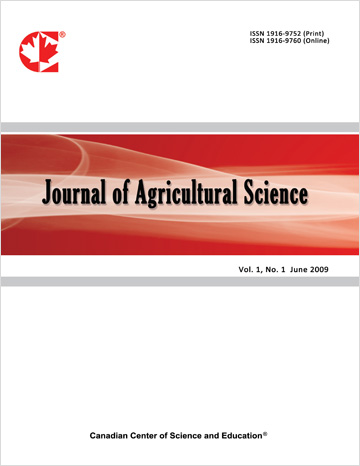Morphological and Patogenic Characterization of Sclerotinia sclerotiorum
- Thais P. Zanatta
- Stela M. Kulczynski
- Caroline W. Guterres
- Daniele C. Fontana
- Daniela Meira
- Eduardo L. Ceolin
- Eduardo Balem
- Mateus Trevisan
- Joao Antônio Paraginski
- Paola A. Buffon
Abstract
White mold is a disease with a wide distribution worldwide. Temperatures between 18-23 °C and high humidity conditions favor the occurrence of the pathogen. For the control of the disease it is fundamental to understand the morphology and pathogenicity of the fungus. The objective of this study was to characterize the morphological and pathogenic characteristics of Sclerotinia sclerotiorum isolates from the state of Rio Grande do Sul. Sclerodes were disinfested, placed in the center of plates containing culture medium and incubated under controlled conditions. The evaluations were performed daily, during a period of 30 days, from the incubation of sclerotia. The experimental design was completely randomized, with four plaques per isolate, each plate one replicate. The characteristics evaluated for the mycelium characterization were: time required for the fungus to occupy the plate; density of the formed mycelium; coloration of the colonies and mycelial growth rate. Scleroderma assessments were based on training or not; time for formation of the first sclerodium; total amount formed per plate; Format; distribution in the colony and weight. The isolates were pathogenically characterized by the methodology of inoculation of the detached leaf. All data were submitted to analysis of variance and the means were compared by the Skott-Knott test, at 1% probability. The evaluated populations presented wide variability for the studied characteristics. It was not possible to verify the existence of common groups that could be related to the origin of the isolates, due to the high genetic diversity. The isolates showed different levels of aggressiveness, the two being more aggressive LF02 and LF06.
- Full Text:
 PDF
PDF
- DOI:10.5539/jas.v11n8p302
Journal Metrics
- h-index: 67
- i10-index: 839
- WJCI (2023): 0.884
- WJCI Impact Factor (2023): 0.196
Index
- AGRICOLA
- AGRIS
- BASE (Bielefeld Academic Search Engine)
- Berkeley Library
- CAB Abstracts
- ChronosHub
- CiteSeerx
- CNKI Scholar
- Copyright Clearance Center
- CrossRef
- DESY Publication Database
- DTU Library
- e-Library
- EBSCOhost
- EconPapers
- Elektronische Zeitschriftenbibliothek (EZB)
- EuroPub Database
- Excellence in Research for Australia (ERA)
- Google Scholar
- Harvard Library
- IDEAS
- iDiscover
- Jisc Library Hub Discover
- JournalTOCs
- KindCongress
- LIVIVO (ZB MED)
- LOCKSS
- Max Planck Institutes
- Mendeley
- MIAR
- Mir@bel
- NLM Catalog PubMed
- Norwegian Centre for Research Data (NSD)
- Open J-Gate
- OUCI
- PKP Open Archives Harvester
- Polska Bibliografia Naukowa
- Qualis/CAPES
- RefSeek
- RePEc
- ROAD
- ScienceOpen
- Scilit
- SCiNiTO
- Semantic Scholar
- SHERPA/RoMEO
- Southwest-German Union Catalogue
- Standard Periodical Directory
- Stanford Libraries
- SUDOC
- Swisscovery
- Technische Informationsbibliothek (TIB)
- Trove
- UCR Library
- Ulrich's
- UniCat
- Universe Digital Library
- WorldCat
- WRLC Catalog
- Zeitschriften Daten Bank (ZDB)
Contact
- Anne BrownEditorial Assistant
- jas@ccsenet.org
